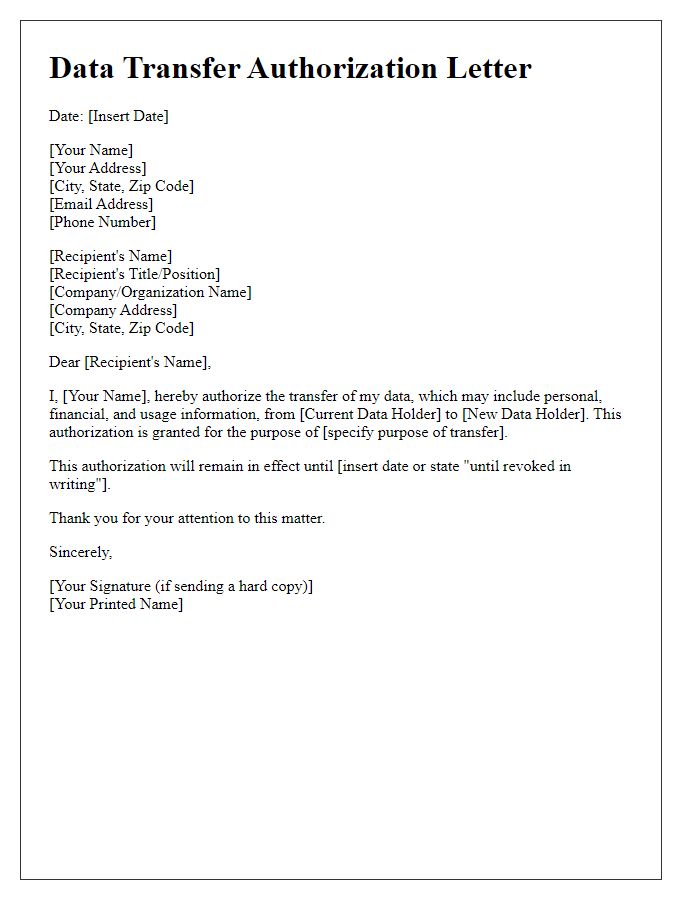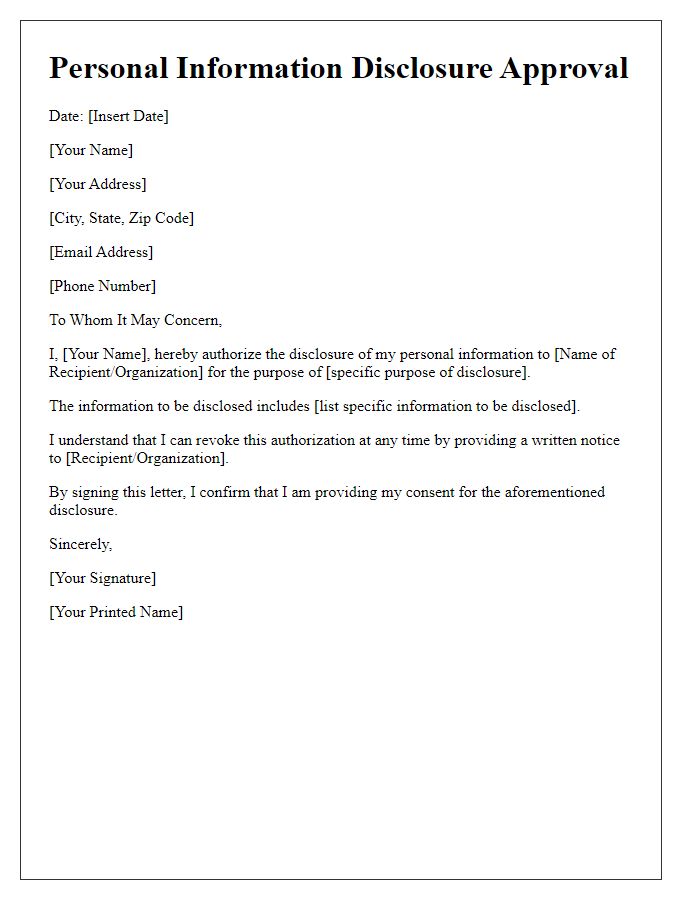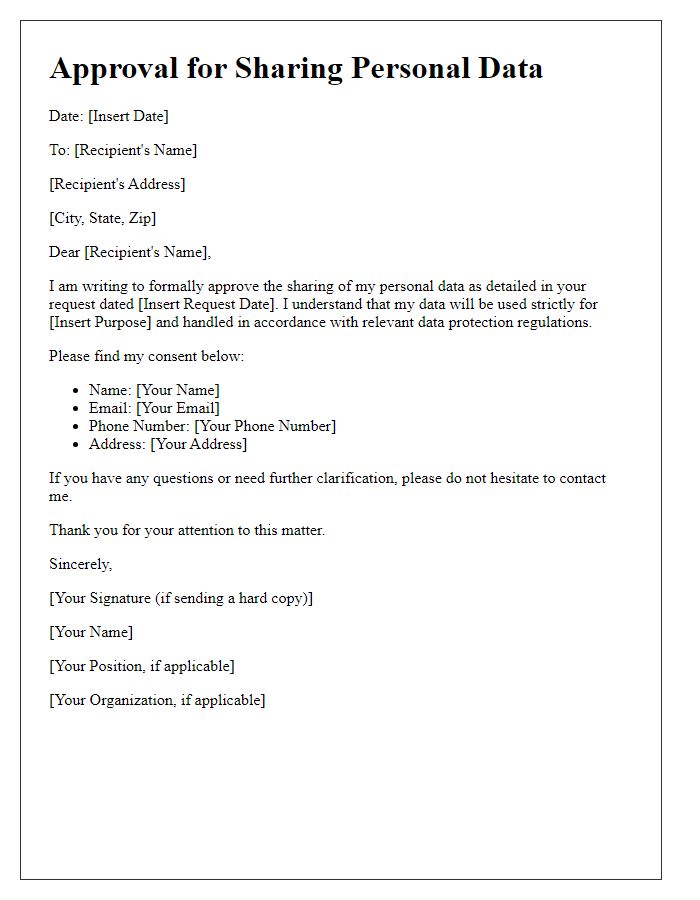Are you looking to streamline the process of sharing your personal data securely? Writing a personal data sharing authorization letter doesn't have to be complicated! In this article, we'll break down the essential elements you need to include while keeping it clear and concise. So, grab a cup of coffee and join us as we explore how to craft the perfect authorization letter!

Clear Identification of Parties
The personal data sharing authorization process begins with a clear identification of parties involved, including full names, addresses, and contact information. For instance, the first party may be "John Doe, residing at 123 Main Street, Springfield, Illinois, with the contact number (123) 456-7890." The second party could be "XYZ Corporation, located at 456 Corporate Lane, Metropolis, Illinois, with the contact number (987) 654-3210." Each party's role in the data sharing must be defined, whether as the data provider, the data recipient, or both, ensuring mutual understanding of responsibilities and compliance with regulations such as the General Data Protection Regulation (GDPR) or the California Consumer Privacy Act (CCPA). This clear identification fosters an environment of transparency and trust, crucial for nuanced communication around sensitive information exchanges.
Specific Data to be Shared
Submitting personal data sharing authorization form can facilitate effective communication regarding sensitive personal information. Categories of specific data to be shared include identifiable information such as name, address, date of birth, and social security number. Health-related data may encompass medical history, current medications, and treatment plans. Financial records could include bank account details, income statements, and credit history. Furthermore, additional documentation might consist of employment verification, educational background, and personal references. Each of these data types plays a significant role in various processes including healthcare management, financial transactions, and employment applications, ensuring that all stakeholders are accurately informed and able to act accordingly.
Purpose of Data Sharing
Personal data sharing authorization allows organizations to collect, process, and exchange personal information for specified purposes. The data shared may include identifiable details such as name, address, email, phone number, and other sensitive information relevant to the context. Authorization ensures compliance with regulations like the General Data Protection Regulation (GDPR) in Europe, protecting individual privacy rights. This process may involve data sharing for purposes related to marketing campaigns, service improvements, or research collaborations. Clarity regarding the duration of data retention and the specific entities involved in data sharing enhances transparency and trust between the individual and the organizations handling their personal information.
Duration of Consent
Individuals consent to share personal data for a specified duration, typically indicated as one year from the date of authorization. This period allows organizations to utilize the data for operational purposes, such as service improvement or targeted marketing, while ensuring compliance with data protection regulations. After the consent duration expires, individuals must be notified about the need for renewal or reevaluation of the terms. Organizations should maintain transparent records detailing the consent timeline to facilitate accountability and trust, reinforcing the importance of safeguarding personal information.
Revocation and Contact Information
Personal data sharing authorization revocation is vital for protecting individual privacy. In the context of GDPR (General Data Protection Regulation) compliance, individuals can officially revoke consent to organizations that process personal data. Contact information should include the individual's full name, email address, and phone number for efficient communication. It is important to specify the organization's name, relevant department handling data processing, and any specific data categories being revoked, such as health records, financial information, or contact details. The revocation notice must include a clear statement expressing the desire to cease data sharing, ensuring that the organization acknowledges and acts accordingly. Detailed documentation of the revocation request aids in tracking compliance and safeguarding personal rights.













Comments